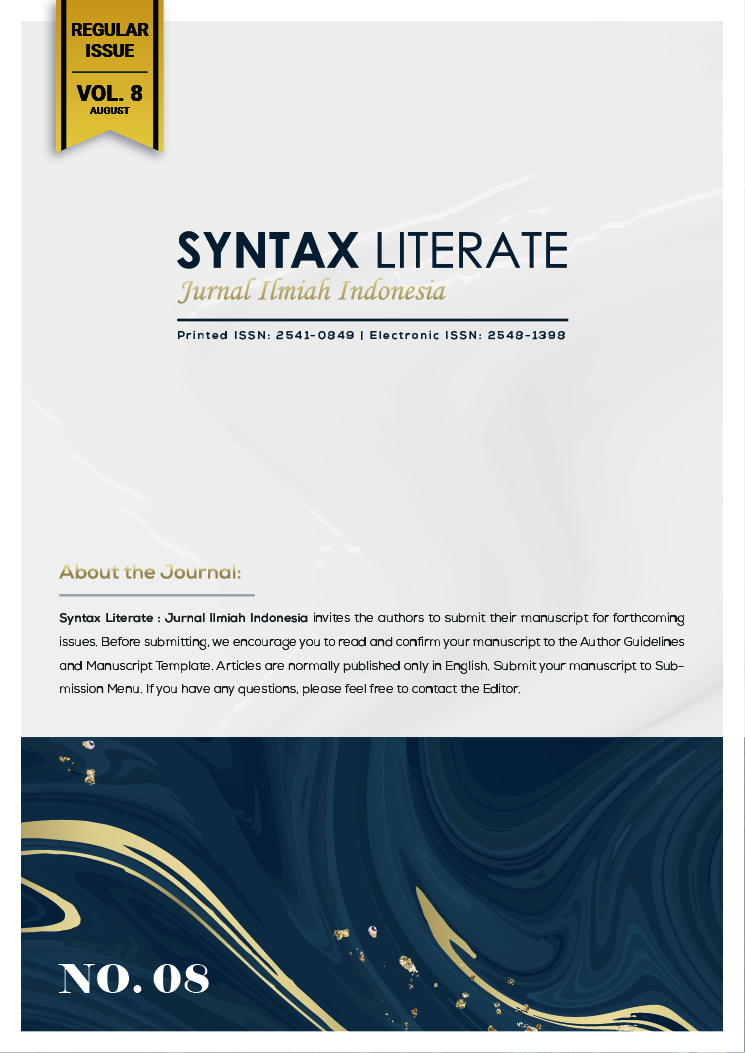Dukungan Digital Transformation pada Daya Saing PT Pembangkitan Jawa Bali Services
Abstract
This study discusses the role of digital transformation in achieving sustainable competitive advantage at PT PJB Services, a power plant operation and maintenance services company in the era of the fourth industrial revolution. This study examines the effect of institutional pressure and digital transformation on competitive advantage as well as the mediating role of digital transformation between institutional pressure and competitive advantage. In addition, this study also investigates the moderating impact of innovation capability on the relationship between digital transformation and competitive advantage. Quantitative methods were used in this study using survey design and structural equation modeling (SEM) analysis to test the hypotheses and link the variables under study. The results showed that institutional pressure and digital transformation have a positive and significant influence on competitive advantage. In addition, digital transformation serves as a mediator between institutional pressure and competitive advantage, while innovation capability strengthens the impact of digital transformation on competitive advantage. The findings emphasize the importance of addressing institutional pressures, implementing effective digital transformation, and developing innovation capabilities to achieve sustainable competitive advantage in a rapidly changing and competitive market.
Downloads
References
Albinson, N., Blau, A., & Chu, Y. (2016). The future of risk: New game, new rules. Deloitte Development LLC.
AlMulhim, A. F. (2021). Smart supply chain and firm performance: the role of digital technologies. Business Process Management Journal, 27(5), 1353–1372. https://doi.org/10.1108/BPMJ-12-2020-0573
Baldwin, J. R. (1999). Innovation, training and success. Available at SSRN 202229.
Brenner, B. (2018). Transformative sustainable business models in the light of the digital imperative—A global business economics perspective. Sustainability, 10(12), 4428. https://doi.org/10.3390/su10124428
DiMaggio, P. J., & Powell, W. W. (1983). The iron cage revisited: Institutional isomorphism and collective rationality in organizational fields. American Sociological Review, 147–160.
El Hilali, W., El Manouar, A., & Idrissi, M. A. J. (2020). Reaching sustainability during a digital transformation: a PLS approach. International Journal of Innovation Science, 12(1), 52–79. https://doi.org/10.1108/IJIS-08-2019-0083
Fellenstein, J., & Umaganthan, A. (2019). Digital Transformation: How enterprises build dynamic capabilities for business model innovation: A multiple-case study within the logistics and transportation industry.
Hanna, N. K. (2016). Mastering digital transformation: Towards a smarter society, economy, city and nation. In Mastering Digital Transformation: Towards a Smarter Society, Economy, City and Nation (pp. i–xxvi). Emerald Group Publishing Limited.
Ji, Z., Zhou, T., & Zhang, Q. (2023). The Impact of Digital Transformation on Corporate Sustainability: Evidence from Listed Companies in China. Sustainability, 15(3), 2117. https://doi.org/10.3390/su15032117
Kaplan, A., & Haenlein, M. (2019). Siri, Siri, in my hand: Who’s the fairest in the land? On the interpretations, illustrations, and implications of artificial intelligence. Business Horizons, 62(1), 15–25. https://doi.org/10.1016/j.bushor.2018.08.004
Leão, P., & da Silva, M. M. (2021). Impacts of digital transformation on firms’ competitive advantages: A systematic literature review. Strategic Change, 30(5), 421–441. https://doi.org/10.1002/jsc.2459
Liu, H., Ke, W., Wei, K. K., & Hua, Z. (2013). The impact of IT capabilities on firm performance: The mediating roles of absorptive capacity and supply chain agility. Decision Support Systems, 54(3), 1452–1462.
McAfee, A., Brynjolfsson, E., Davenport, T. H., Patil, D. J., & Barton, D. (2012). Big data: the management revolution. Harvard Business Review, 90(10), 60–68.
Orsato, R. J. (2006). Competitive environmental strategies: when does it pay to be green? California Management Review, 48(2), 127–143.
Rinawiyanti, E. D., & Lianto, B. (2017). Pengaruh Karakteristik UKM pada Kapabilitas Inovasi dan Kinerja Inovasi UKM (Studi Kasus pada Sentra IKM Alas Kaki Jawa Timur). JIEMS (Journal of Industrial Engineering and Management Systems), 9(2).
Srivastava, S. K., & Panigrahi, P. K. (2016). The impact of e-government and e-business on economic performance: A comparative study of developing and developed countries. TheJournal of Contemporary Issues in Business and Government, 22(1), 36–50. https://doi.org/10.1016/j.giq.2019.06.002
Stolterman, E., & Fors, A. C. (2004). Information technology and the good life. Information Systems Research: Relevant Theory and Informed Practice, 687–692.
Wiles, J. (2019). Speed up your digital business transformation.
Wooten, M., & Hoffman, A. J. (2017). Organizational fields: Past, present and future. The Sage Handbook of Organizational Institutionalism, 2, 55–74. https://doi.org/10.4135/9781526415066
Xu, J., Yu, Y., Zhang, M., & Zhang, J. Z. (2023). Impacts of digital transformation on eco-innovation and sustainable performance: Evidence from Chinese manufacturing companies. Journal of Cleaner Production, 393, 136278.
Yousaf, S., Khawaja, K. F., & Shah, T. A. (2022). Impact of Institutional Pressure on Competitive Advantage: The Mediating Role of Sustainable Supply Chain Management Practices. NICE Research Journal, 1–30.
Zikmund, W. G., Babin, B. J., Carr, J. C., & Griffin, M. (2013). Business research methods. Cengage learning.
Copyright (c) 2023 Goesti Nahru, Yetty Dwi Lestari

This work is licensed under a Creative Commons Attribution-ShareAlike 4.0 International License.











